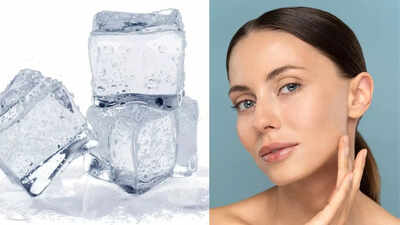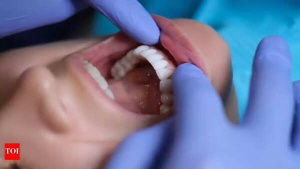Facial icing, or cryotherapy, has surged in popularity on social media, touted for its potential therapeutic and aesthetic benefits. Proponents claim it can address acne, reduce swollen eyes, and alleviate other skin concerns.

While cold therapy has established uses in treating injuries and managing pain, the scientific evidence supporting its specific benefits for facial skin remains limited. Despite the lack of definitive proof, many individuals believe in the efficacy of facial icing, driving its widespread adoption as a beauty trend. Further research is necessary to validate its purported benefits for the skin.
Healthline suggests two common methods for applying ice to your face:
With either method, gently massage your face in slow, circular motions for approximately 1 to 2 minutes. Avoid prolonged direct contact of the ice with your skin exceeding 2 minutes, as it may lead to irritation. This circular massage can be performed once daily, focusing on areas such as:
Prior to incorporating ice facials into your skincare regimen, it's advisable to consult with a healthcare or skincare professional for personalized guidance. Consider these helpful tips:
Regularly change the ice and wrapping to minimize the risk of bacterial spread, and remember that icing should complement, not replace, your existing skincare routine.
Several factors contribute to the growing popularity of ice facials:
According to Healthline, prolonged or improper facial icing can result in:
Individuals with pre-existing health conditions, such as diabetes or Raynaud's syndrome, should exercise caution or seek medical advice before attempting facial icing, as it may worsen existing sensitivities or nerve-related issues.
Facial icing offers several potential benefits, including:
While these benefits appear promising, further research is needed to substantiate the direct effects of facial icing on puffiness and acne.
Disclaimer: This content provides general information and does not substitute for professional medical or dermatological advice. Individual skin types and conditions vary. Always consult a dermatologist before starting new skincare routines.
Newer articles
 Smith Targets Test Return After Baseball Cage Recovery Stint
Smith Targets Test Return After Baseball Cage Recovery Stint
 Rishabh Pant's Fearless Batting Revolutionizing Test Cricket, Says Greg Chappell
Rishabh Pant's Fearless Batting Revolutionizing Test Cricket, Says Greg Chappell
 Gavaskar Calls for Kuldeep Yadav's Inclusion Amid Bumrah Fitness Concerns Ahead of Second England Test
Gavaskar Calls for Kuldeep Yadav's Inclusion Amid Bumrah Fitness Concerns Ahead of Second England Test
 Oral Cancer: Spotting the Signs, Understanding the Risks, and Why Early Detection is Key to Survival
Oral Cancer: Spotting the Signs, Understanding the Risks, and Why Early Detection is Key to Survival
 5 Silent Signals of Prediabetes You Shouldn't Ignore
5 Silent Signals of Prediabetes You Shouldn't Ignore
 Vitamin D Could Slash Tooth Decay Risk by 50%, New Study Finds
Vitamin D Could Slash Tooth Decay Risk by 50%, New Study Finds
 Silent Signals: Don't Ignore These 5 Early Warning Signs of Liver Disease
Silent Signals: Don't Ignore These 5 Early Warning Signs of Liver Disease
 Brain's "15-Second Rule" Explains Why You're Always Seeing the Past, Study Reveals
Brain's "15-Second Rule" Explains Why You're Always Seeing the Past, Study Reveals
 Akmal Slams PCB's Interim Coach Pick: Questions Logic Behind Mahmood Appointment
Akmal Slams PCB's Interim Coach Pick: Questions Logic Behind Mahmood Appointment
 Nitish Rana Eyes Delhi Return After Disappointing Uttar Pradesh Stint
Nitish Rana Eyes Delhi Return After Disappointing Uttar Pradesh Stint